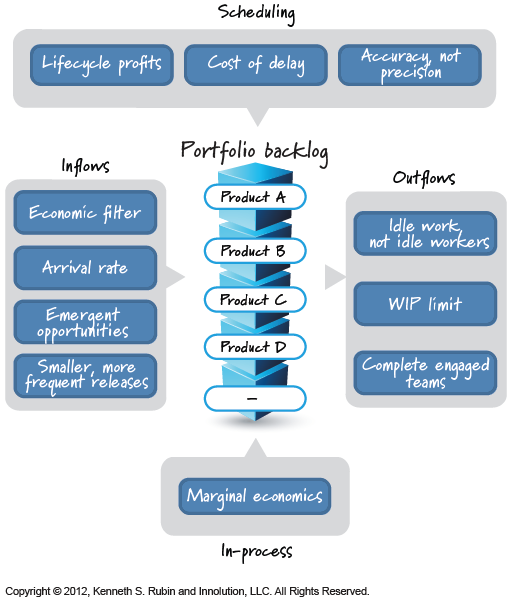In agile portfolio planning we determine which portfolio backlog items to work on, in which order and for how long. In Chapter 16 of my book Essential Scrum, I offer 11 strategies for establishing a portfolio backlog. These are divided into 4 key areas: scheduling, managing inflows, managing outflows, and managing in-flow products, as shown in the figure below.

People often ask me which of these strategies is most important. They want to know which strategies they should choose first and which can be saved for later. Here’s the thing. This isn’t a cafeteria, where you choose what you’d like to do from a buffet of choices. It’s an interconnected, interwoven process that just doesn’t work as well if parts are missing.
Take this set of strategies for instance:
- Work on smaller and more frequent releases
- Deal quickly with emergent opportunities
- Establish and don’t start more projects than your WIP limit.
These three self reinforce—if an organization is always working on smaller and more frequent releases, and is not exceeding its WIP limit, then when a fantastic emergent opportunity presents itself, that organization should not have to wait too long before one of the smaller projects will complete and it can embrace the great new opportunity.
All of the strategies are like that. To take full advantage of the benefits of one, you need to be using all the others as well. That being said, if I had to choose (for some reason) only a few strategies to start with, I’d focus on the cost of delay, smaller and more frequent releases, WIP limit, and marginal economics. But remember, that’s only as a starting point—a first course if you will. As quickly as possible, you must begin adding the other strategies to your portfolio planning activity. Only then will you be agile enough to confidently and quickly adjust course and seize new opportunities.